Your Cart is Empty
Free Shipping for orders over $49 in Australia, $199 IN NEW ZEALAND/USA/CANADA AND $249 REST OF THE WORLD
Free Shipping for orders over $49 in Australia, $199 IN NEW ZEALAND/USA/CANADA AND $249 REST OF THE WORLD
Add description, images, menus and links to your mega menu
A column with no settings can be used as a spacer
Link to your collections, sales and even external links
Add up to five columns
Add description, images, menus and links to your mega menu
A column with no settings can be used as a spacer
Link to your collections, sales and even external links
Add up to five columns
Places in the World Not to Visit
by Linda Heaphy May 10, 2017
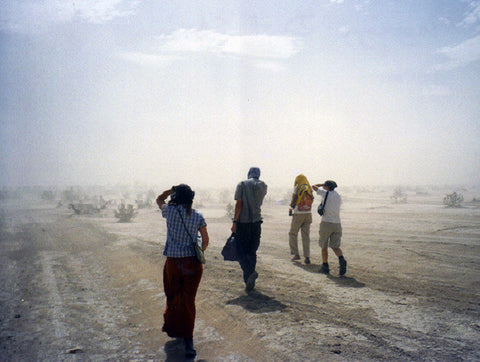
One of the places on the list, Merzouga in Morocco.
That's a sandstorm we're walking into. Photo credit: Kashgar 2002
Some people would say that any travel is good travel. But here at Kashgar we beg to differ. There are some places on planet Earth that are so awful, dispirited, sorry or wretched that one night in the place feels like a year and the memory lingers with you forever. No, I'm not going to include the stalwarts of "never visit" lists, places like the Exclusion Zone of Chernobyl, that cheese wheeling festival in Gloucester or the much maligned Poison Garden of Northumberland (actually quite a nice place). You can easily avoid these holiday attractions if you really want to, besides which each of them has real merit in the eyes of certain beholders such as film makers, bloggers, and aficionados of the quirky and unusual. No, we're talking about transit towns, the kind of places that make you miserable because you're forced to spend time in them when you'd much rather be elsewhere, the kind of places that eat into your vacation time and suck the goddamn soul out of you while they do so. So, here is our list of six places to avoid at all costs. We've been to all of them. Don't say we didn't warn you.
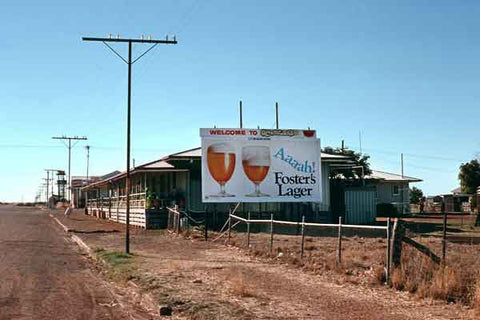
The Camooweal pub. Photo courtesy of Ludo Kuipers OzOutback Internet Services
A small outback town positioned right on the border between Queensland and the Northern Territory of Australia, in a region known to many Australians as the GAFA (Great Australian Fuck All), Camooweal may (or may not) be quite surprised to find itself on this list. One happy camper wrote recently of their trip through Camooweal "The drive to Camooweal was sparse through the Avon Downs and similar in parts to the Nullarbor but nowhere near as interesting". Another wrote: "CAMOOWEAL! What can we say about Camooweal? Umm, it is the first town over the Queensland border. I think that's about it!" The Sydney Morning Herald's travel guide describes the town as a "strange roadside township" and states that the road from Mount Isa to Camooweal "may well be the worst bitumen road in Australia". Words most frequently used to describe the town in travel blogs are: boring, dry, wet, dusty, flies and locusts. But being boring is the least of Camooweal's problems. Arrive on pension day when the local community of unemployed receives and cashes in their pension cheques, then spends the entire proceedings on booze, and you could find yourself in real trouble. If it is pension day and you must spend the night, take advice from the local police and camp in the dry riverbed just outside of town. Or better still, keep on driving.

This is the only picture I could find of Dagupan on the whole of the internets.
There's a reason for that.
The official blurb for the Dagupan tourism website states "Dagupan City has come a long way since officially being declared a city on June 20, 1947". I beg to differ. My diary entry for our trip there in January 2000 reads "[we] spend the rest of the day driving grimly to the west coast, finally holing up for the night in a dreadful industrial town called Dagupan. The next morning, we were so appalled by our surroundings that we left at first light...". Polluted, overpopulated, badly planned and earthquake prone, the city has suffered any number of major calamities including flooding, sinking, the appearance of "sand boils" and unspeakable traffic congestion. Building construction is allowed to proceed 24 hours a day in this town and the constant drone of the river dredgers is maddening. Incidentally, Dagupan has a high concentration of 57 banks and 44 financial institutions, none of which will actually allow you to withdraw money. Avoid at all costs.
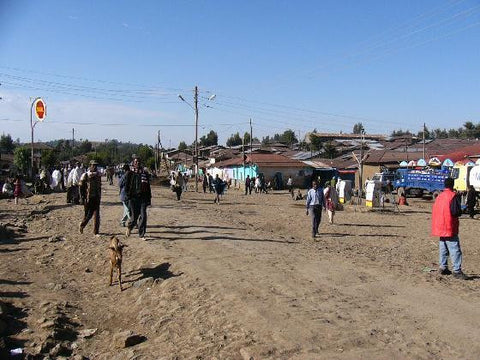
Picture speaks for itself really. Picture courtesy of frockland
A miserable truck stop on the road between Gondar and Aksum, it has become by default an over night stop for western travellers and the entry point for tourism into the Simien Mountains. And boy are the locals cashing in. Looking back at my notes of the trip I reread my description of the town as a "shithole" (twice) and my particular hotel as "one of the worst I've ever seen in my life", then shudder with the force of repressed memories clawing their way back up to the surface of my brain. Our room, a concrete box filled with bed bugs and fleas, was immensely overpriced at US$14 per night, but I was willing pay over the odds because it was apparently the last room in town with a private bathroom - really a stinking alcove with a hole in the floor and a rusty tap half way up the wall. This incidentally, was rated as the best hotel in town and was miles above its competitors in terms of quality. Try to look Debarq up on the internet and you are met with an embarrassed silence. Anyone who does mention it does so quickly as if trying to get the taste of the place out of their mouth. If you're planning on travelling through the north of Ethiopia or into the Simien Mountains to view the Gelada Baboons, you might not have a lot of say in whether you stay in Debarq because Park Headquarters are located here, and it's the only place to organise permits, (overpriced) guides and poorly-maintained trekking equipment. But at least you can mentally prepare for it, and with a bit of forward planning you might not even have to stay the night.
4. The roads of India and Nepal

A typical Indian road. Note the truck overtaking into oncoming traffic, while our driver contemplates overtaking him. Photo credit: Kashgar.
Bolivia's Road of Death makes it onto every version of this kind of list, and with good reason. But here I've decided to up the ante and include pretty well all the roads in India (and Nepal) outside of the major cities. Why? Drive on a few of them and you'll quickly find out. Using any gear below third is considered a slur on the average Indian driver's manhood, or perhaps it is in the mistaken belief that this will somehow save petrol. It is also the local practice not to use headlights at night unless absolutely, and I do mean absolutely, necessary. Nepal, if you can believe it, is even worse because the national 'Use Horn" policy (a slogan consistently found on the back of trucks, in case one was likely to forget) is honed to an especially fine art. These are countries where might is right on the road and cows have absolute right of way over everything. I've seen four (yes four) vehicles attempt to overtake each other at once. Also, watch out for the speed bumps that suddenly appear on otherwise featureless stretches of open road – lets say every 50 kms or so. Another delightful feature of Indian roads are the hordes of local men pissing on the shoulder. Ah India, the world is your urinal - if you're a man. Where all the ladies are passing water is another matter entirely, but presumably they are much better at holding it in. But I digress. Seat belts are never worn unless police are around and accidents are frequent; a recurrent coda to the endless newspaper descriptions of accidents being "and the driver has absconded". Up to this point I have described my personal experiences in hired cars, however travelling in busses is much, much worse. Drivers are easily distracted, preen their giant moustaches and eyebrows in rear view mirrors and carry on animated conversations on their mobiles. I remember one group of travellers in Nepal who were so frightened by their driver's behaviour they commandeered the bus and drove it themselves. Our advice? When travelling between cities, fly or take the train. More expensive, but what price comfort and safety?
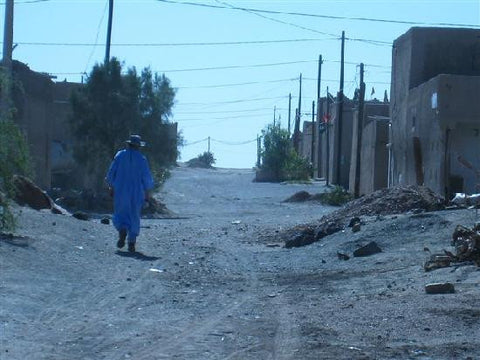
The main street of Merzouga. Photo courtesy of Trelawn
Merzouga is a small town near the giant sand dune of Erg Chebbi, right on the edge of the Moroccan part of the Saharan Desert. Westerners come here for one reason and one reason only: to arrange a camel safari into the sand dunes and get a taste of what they hope is real Berber life. Consisting of approximately 5 streets, a few meagre buildings and over 50 outlying lodges, called auberges, the tourist industry here is very aggressive, or in the words of Wikitravel "smooth and deceivingly vicious". Touts mark you as their own as soon as you arrive in town, then use every known trick in the book and a few more to get you to commit to their auberge/safari – which you must do within a short amount of time if you are to have a bed for the night. Here we once heard a young Canadian tourist slandered as a "Nazi Jew" for questioning a tout's prices and we were personally threatened with violence for chatting to a group of tourists that we recognised from another town – presumably because we might have convinced them to come to our auberge instead of the one they were being led to. Once you are in your auberge you are perfectly safe and free from assault, but choosing one and getting there can be an absolutely harrowing experience. Worth the night you spend out on the dunes? Not really. Our advice is, if you want a Saharan experience, approach the dunes from another region altogether, say Egypt. Or research and book your auberge before arriving, thus avoiding Merzouga completely. Whatever you decide, boycott Merzouga until the locals have learned some manners.
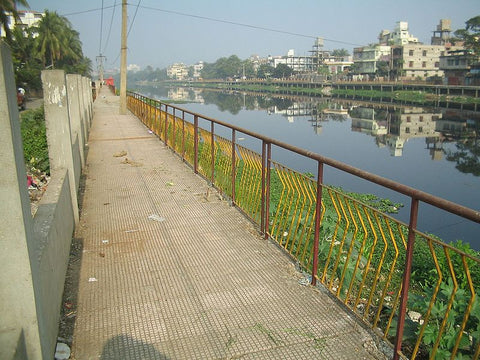
Guwahati in all its glory. Photo courtesy of Storkk
The largest city in eastern India and gateway to the fabulous and exotic northeast region of Assam and Nagaland, Guwahati is one of the fastest growing cities in the world but exists in one of the most neglected states in India. The results are palpable if you are a foreigner trying to get around or make your way further into Assam. The hotels are of the poorest standard we've ever seen, yet their pries for foreigners range into the hundreds of dollars per night. According to Wikipedia two 5 star hotels are currently being built, although it appears that these will be of local rather than international standard – read foam mattresses and twenty nine channels of Bollywood on TV, for which you will probably be asked to pay over US$300 a night. Getting around the region by car is a nightmare too (Wikipedia states that "roads in and out of Guwahati suffer from insufficient right of way, illegal construction methods, and improper planning and design" (which in our opinion is an understatement). The city is plagued by terrorist attacks, carried out by local insurgents seeking independence from mother India. Given this situation, its no wonder that the central Indian government is not interested in sinking vast amounts of capital into a region that may at any time declare itself a separate country. Not very helpful for the western traveller however, and getting a permit into the tribal regions to the east is almost impossible, especially in advance, as the political situation is volatile and changes from day to day. Add congestion, pollution, a non-existent tourism infrastructure and unhelpful locals to the mix, making Guwahatti an incredibly unrewarding experience and also a very frustrating one. Our advice: an enticing region but one probably best left to local tourists for the time being. See you in 100 years time Guwahatti!
Leave a comment
Comments will be approved before showing up.
Also in Travel

Where Would You Like to go to Today: Kashgar's Hotel Classification System
by Linda Heaphy May 22, 2017
Read More Articles
About the Author
- Linda has a Honours degree in Marine Biology and a PhD in Ecology from the University of NSW, Australia. She has travelled extensively and is a passionate writer on subjects as diverse as the role played by women throughout history, tribal communities and their customs, symbology and ethnology, talismans and their history. Occasionally she also writes about her travel experiences, her new life on a 25 acres in the Northern Rivers region of northern Australia and her black miniature poodle Phoenix. She is currently writing her first book on talismans.
About Us
-
The Kashgar Philosophy

Kashgar began through a love of travel.
In 1989 my father Bernard packed in his house painting business and set off for two years on a backpacking trek to the remotest corners of the world. When he finally arrived in the oasis city of Kashgar, China, he was so impressed with its history that he decided to start a new life collecting and selling exotic goods from all over the world. For 2000 years the legendary city of Kashgar was a melting pot of ideas and a key trading post on the historic Silk Road. It was this unique combination of philosophy and trade that my father wanted to recreate at home.
Starting in markets in 1991, he opened his first store in the Sydney suburb of Newtown in 1994. I gave up my own career as a government scientist to join him in 2000 and soon convinced my partner Ian to join us in what was to become the Family Business.
Today our version of Kashgar stocks a hugely diverse range of furniture, rugs, textiles, antiques, handicrafts and jewellery sourced from over twenty different countries including India, Nepal, Tibet, China, Thailand, Burma, Laos, the Philippines, Vietnam, Mexico, Peru, Turkey, Palestine, Syria, Afghanistan and Turkmenistan. Our collection includes contemporary and tribal silver and gold jewellery, a unique range of headhunting curios, antique Buddhist relics and a collection of one-off necklaces, earrings and bracelets that I design and create myself using the beads and jewellery making techniques of ethnic minorities from around the globe.
Kashgar is a philosophy as well as a store. We are committed to supporting traditional artisans and small village communities by selling authentic handcrafted goods which are personally collected by us. By supporting traditional methods of design and production we hope to encourage local cottage industries which have a low impact on the environment and help ethnic minorities maintain their self-sufficiency into the 21st Century. We are particularly committed to assisting women around the world and to this end have worked with several organisations including the Hua Bin Women's Union of Vietnam, the East Timorese Women's Association and Tikondane in Zambia. Time honoured means of craftsmanship and traditional ways of life are disappearing as people all over the world give up their identity in favour of jeans and T-shirts. We see our trade as a means of staving off the inevitable encroachment of the 21st century, assisting communities to decide for themselves which parts of the western world they wish to incorporate (medicine, education) and which they wish to reject (prostitution, drug production, begging and servitude to warlords). We encourage our customers to think of the handicrafts and artifacts they buy from us as an investment: a piece of history and a way of life that may soon be gone forever.
Kashgar has recently closed its retail outlet and gone completely online.
In the past our pieces appeared in many movies including The Hobbit, Mission Impossible 2, Queen of the Damned, Scooby Doo, Moulin Rouge and Wolverine, and in many televisions series, as well as in plays, commercials and exhibitions. We've found special pieces for individual customers as well as for film sets, event management companies, hotels, businesses, consulates and embassies. The uniqueness of our stock means that we are also very appealing to interior and fashion designers with a taste for the exotic.
There is something for everyone at Kashgar - collectors, the curious, those looking for a special present or for something unique to adorn the home. Most of our items are one-off specialties; other pieces we only stock in small quantities so as to continuously offer a wide and ever-changing range of interesting products. We are also packed with ideas for decorating home and work premises that will challenge your established concepts of design and storage.
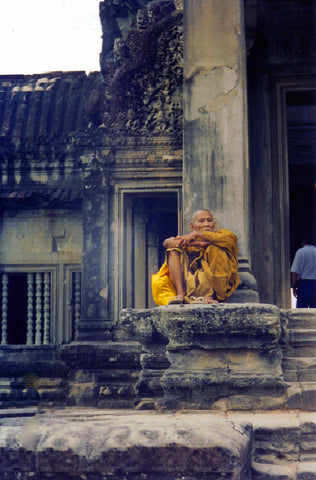
Please enjoy - Linda Heaphy
Become a Kashgar nomad and join our mailing list...
Sign up to get the latest on sales, new releases and more …




